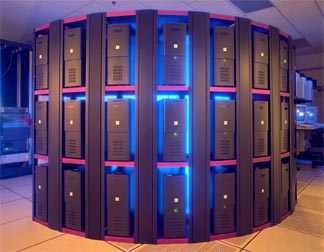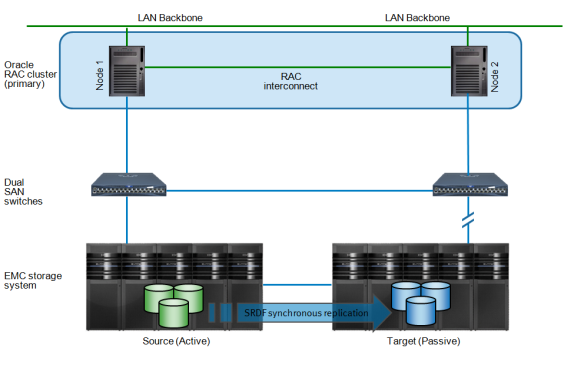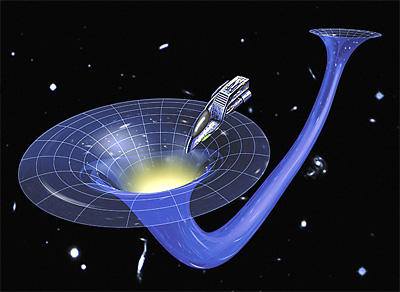Here’s an EMC video on Youtube about Oracle RAC with EMC VPLEX. Very nice, check it out!
Tag Archives: stretched rac
Oracle RAC on VPLEX now certified
Last week EMC announced that Oracle RAC on VPLEX stretched clusters is now officially supported and certified by Oracle!
News Summary:
- Oracle has certified that EMC® VPLEX™ METRO in a stretch cluster configuration can provide Oracle Real Application Clusters (Oracle RAC) customers with an easy-to-deploy, active/active solution, as they transform from single- to dual-site environments.
- Having passed Oracle’s rigorous testing standards, the EMC VPLEX METRO solution can enable Oracle RAC to be easily configured over extended distances while enabling simultaneous access to the same data at both locations.
This is the final step in a process to help customers that have been asking for true active/active support over distance for their mission-critical Oracle Database business processes.
For those who are not yet familiar with this solution, here is a small summary:
- Customers have been in search for ways to survive datacenter failures (i.e. “disasters”) without the need to recover and restart the databases, in such a way that any component failure or even complete site failure would not lead to database downtime
- This was not possible before except when deploying complex configurations based on host mirroring using Oracle ASM or a 3rd party volume manager. (note that competing storage virtualization products from other storage vendors also do not offer this full capability – even though their marketing might make it seem so)
- EMC VPLEX offers this functionality which is now completely certified and supported by Oracle, and the solution avoids risk by making the stretched cluster deployment as easy as a basic Oracle RAC install
- The VPLEX solution offers additional benefits including better performance, better recovery from issues such as component or link failures and offers a complete solution for the whole application stack, not just Oracle
- Note that AFAIK this solution should also work for IBM DB2 (but I haven’t confirmed)
The full news release can be found here: http://www.emc.com/about/news/press/2012/20120517-04.htm
A full series of blog posts on this solution can be found here: https://bartsjerps.wordpress.com/category/vplex/
The VPLEX witness (the final component of VPLEX that made this possible) was announced last year at EMC World 2011. Typically we see the start of market adoption between 1 to 1.5 years after bringing new technology in the market. I am working on a few customers myself who are on the edge of starting a project with this, hopefully by the end of year we have a set of good customer references!
Update: The new white paper can be found here: http://www.emc.com/collateral/software/white-papers/h8930-vplex-metro-oracle-rac-wp.pdf
Update 2: VPLEX support mentioned (briefly) on Oracle’s website: http://www.oracle.com/technetwork/database/enterprise-edition/tech-generic-linux-new-086754.html
Update 3: Demos available on EMC Demo Center:
EMC VPLEX Metro for Oracle RAC Solution Overview
Oracle RAC with VPLEX Metro Site Failure
Oracle RAC with VPLEX Metro Solution Overview
Oracle RAC with VPLEX Storage Failure
If you’re a frequent reader of my blog you might recognize familiar pictures there ;)
Oracle Stretched Cluster with VPLEX (update)
One request I got back after my series on Oracle RAC stretched clusters is if I could summarize again why anybody would choose VPLEX for storage replication over other solutions. My attempt was to describe the principles of VPLEX in enough detail for techies to understand it. For non-geeks, I will try to explain it as brief as possible.
Continue reading
Through the wormhole with Stretched Clusters
Last year, EMC announced a new virtualization product called VPLEX. VPLEX allows logical storage volumes to be accessible from multiple locations. It boldly goes beyond existing storage virtualisation solutions (including those from EMC) in that it is not just a storage virtualisation cluster – but merely a storage federation platform, allowing one virtualized storage volume to be dynamically accessible from multiple locations, as if they were connected through a wormhole, and being built from one or more physical storage volumes.
Stretched Clusters – Alien storage
In my previous posts I described how Oracle ASM can be used to build stretched clusters. I also pointed to some limitations of that scenario. But I am by far not the first one in doing so – and some of EMC’s competitors attempted to build products, features and solutions to overcome some of the limitations in host mirroring.
A while ago, some guys I met from an EMC partner, confronted me with the question why EMC, the market leader in external storage and premium Oracle technology partner, had not offered a solution for these limitations. They pointed to a number of products from competitors that – allegedly – solved the problem already. Also they pointed to the architectural simplicity of these solutions.

At that time I had no good answer (which does not happen to me very often). I was not aware of how these products worked and I asked some questions on that. In that period I was also confronted by our enterprise customers who started demanding an EMC solution for stretched clustering – so I started digging. Could it be that EMC was over-passed by some of these alien storage start-up companies in continuous available storage solutions? It seemed to be the case.
Continue reading
Stretched clustering basics
Before showing my preferred solution for Oracle stretched high availability clusters, first some clustering basics.
Active/passive versus Active/Active clusters

NASA cluster
Most clustering software is based on active/passive scenarios. You have a system (say, a database) that is running on a set of resources (i.e. a server, to keep it simple) and you have another system (a standby system) that is ready to run the system (failover) but is not actually running it at the same time.
An Active/Active system in general means both systems are active at the same time. There is some confusion as this can mean that the standby system is used for other processing (say, A is production and B is standby but currently running acceptance or testing environments).
By my definition, active/active clustering describes a cluster where all cluster nodes (systems) are processing against the same data set at the same time. There aren’t many products that can do this, especially in the database world. One of the few exceptions is Oracle RAC.
Limitations of host-based mirroring for stretched clusters
For data mirroring, EMC SRDF is sometimes used in such a setup that both servers write to one location only (the “far” server writes across dark fibre links to the local storage). EMC has similar tools (Mirrorview, Recoverpoint, etc) for other storage platforms than Symmetrix.

SRDF cluster with passive target
Extreme availability with Oracle stretched clusters
Some of my customers have been pushing for more availability in their Oracle database applications. They want to eliminate downtime completely even if they experience a site failure. Whether this is a real business requirement or a technology push, I’m not sure – I guess a bit of both.

Most of these customers have already implemented Oracle RAC (Real Application Clusters), which provides them active/active server clustering for Oracle. If one of the servers in a RAC cluster fails, the others just keep running – no restart or recovery involved. This is a High Availability option typically for local sites.
For Disaster Recovery, most customers have some sort of storage replication (i.e. EMC SRDF/Synchronous or SRDF/Async, or they use Oracle Data Guard for this which replicates data on the Oracle database level). This protects against site failures and offers zero or near-zero dataloss (for committed transactions in Oracle – the non-committed transactions are rolled back during the restart – and this is exactly one of the problems by the way).
Continue reading



